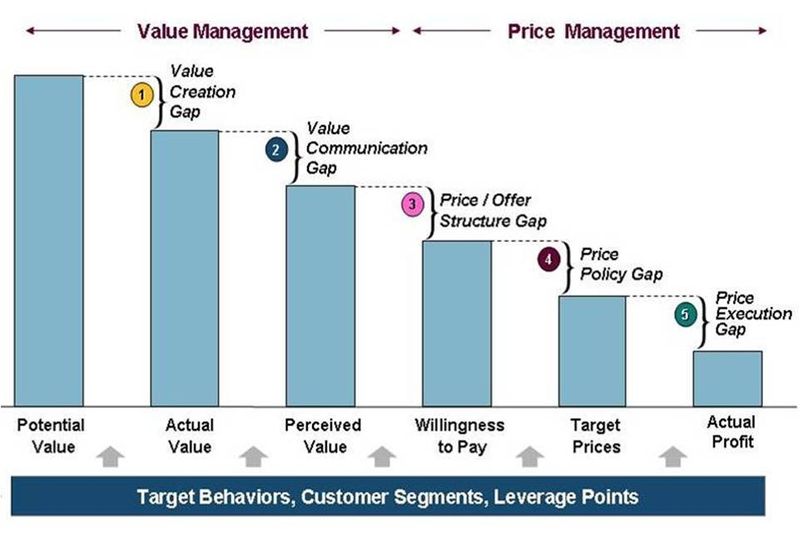The pricing waterfall is a classic and widely used framework for understanding and managing transaction pricing. It illustrates the drop (like a waterfall) between an official list price and the final “pocket” price that the seller sees. Usually it’s not a straight Niagara-like plunge, but rather a flume with a series of multiple drops. These drops are caused by various discounts and related pricing practices. For companies with complex product lines and pricing policies this is quite challenging and has given rise to a number of pricing transaction software companies such as Vendavo, Pros and Zilliant.
Certainly companies can and do benefit from more effectively managing their transactional pricing waterfalls. We would argue that companies must also look further “up-stream” and manage their value waterfalls too. In other words, companies need to be able to create differentiated economic value and list prices should be based on the economic value that offering provides to the customers. As readers of this blog know, we advocate using value models based on Economic Value Estimation for this task. Better aligning price with value will enable higher pocket prices because there is less customer demand for special discounts. The chart below shows how the value management waterfall flows into the price (transaction) management waterfall.
 Transaction (or price management) software is very good at analyzing massive amounts of internal sales data. This data is used to provide dashboards that show the leakages of various pricing policies and the controls that manage them. Where does value management data come from? Since we are typically asked this question when implementing LeveragePoint for Value Management here are some answers:
Transaction (or price management) software is very good at analyzing massive amounts of internal sales data. This data is used to provide dashboards that show the leakages of various pricing policies and the controls that manage them. Where does value management data come from? Since we are typically asked this question when implementing LeveragePoint for Value Management here are some answers:
- Internal Common Wisdom – Value models often begin with a few well-thought hypotheses that are shared within the marketing team. Just by making explicit individual’s often implicit assumptions and then aligning them among a small team can be immensely productive.
- Wiring in Sales – Since sales interact with customers every day, they are well positioned to get the latest field data about the state of customers’ business models and inights as to the relative impact of their offerings versus competitors. Tapping into this data stream closes the loop between sales and marketing.
- Customer Research – We’ve seen this done in a variety of ways. A marketer at one of our clients plans to use LeveragePoint to collect data in her field marketing tests. Other companies commission third-party customer research studies which can be used to build models in LeveragePoint for Value Management that are then tested with customers by sales.
- Web Data Sources – Business intelligence sources like Dow Jones and Thomson-Reuter provide timely data on companies and industries. We are particularly excited about WoframAlpha which provides powerful new ways to find and work with quantitative data.
Like other SaaS solutions, LeveragePoint for Value Management is designed to easily facilitate accessing and integrating these data sources. Providing powerful data search and integration services for specific industries will be an important part of LeveragePoint’s own value proposition.

